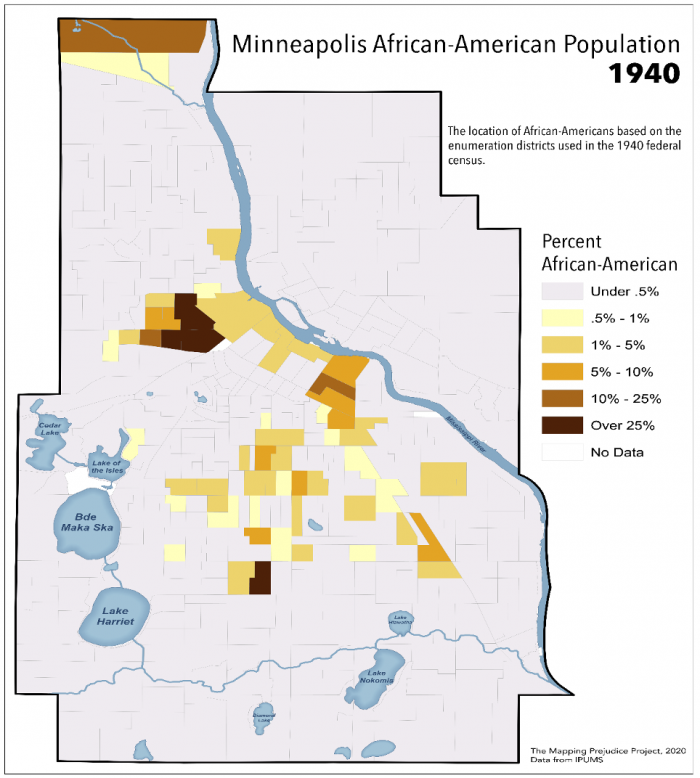Covenants, Deeds and Restrictions
This subject of land restrictions is of special interest to me. My husband, Clark Parker, Sr., tells a fascinating account of our own property ownership. We can therefore easily relate to covenants, deeds and restrictions research project, especially since he is an accomplished real estate expert and builder of multimillion homes, condominiums, schools and other real estate structures. The research of the “Mapping Prejudice Project” and collaborating researchers is showing what communities of color have known for many decades. “Structural barriers stopped many people who were not White from buying property and building wealth for most of the last century. In Minneapolis, these restrictions served as powerful obstacles for people of color seeking safe and affordable housing. They also limited access to community resources like parks and schools. Racial covenants dovetailed with redlining and predatory lending practices to depress homeownership rates for African Americans. Contemporary White residents of Minneapolis like to think their city never had formal segregation. But racial covenants did the work of Jim Crow in northern cities like Minneapolis. This history has been willfully forgotten. So we (Mapping Prejudice Project) created Mapping Prejudice to shed new light on these historic practices. We cannot address the inequities of the present without an understanding of the past. The work of “Mapping Prejudice Project” is part of a broader reckoning with the legacies of racist housing policies. Mapping Prejudice was inspired by groundbreaking work in Seattle and Virginia that show how digital tools can illuminate structural racism and transform our understanding of the past. Mapping Prejudice builds on this existing work. But our efforts in Minneapolis are made especially urgent by the city’s contemporary racial disparities, which are some of the largest in the nation. Our initial research shows that covenants created demographic patterns that remain in place in Minneapolis today. Residential segregation reinforces other disparities in employment, education and health care. Most notable is the gap in homeownership rates. While 78 percent of White families own homes in the Twin Cities, only 25 percent of African American families have title to their dwelling. This project illuminates structural racism and transforms and builds on our understanding of the past. Segregated Seattle was the brainchild of the Seattle Civil Rights and Labor History Project at the University of Washington, which assembled a database of racial covenants that has become an important resource for historians, legal researchers and activists trying to understand how ideas about race shaped real estate law and housing policy. Mapping Inequality was conceived by the University of Richmond’s Digital Lab, which digitized New Deal redlining maps to illuminate how federal policy makers “used racial criteria to categorize lending and insurance risks.” Historians have long understood the importance of redlining. Yet by using digital mapping software to organize, analyze and display historic data about this practice, this project retold the story in a way that made it accessible for a popular audience. Mapping Prejudice is based in the Borchert Map Library at the University of Minnesota. In 2016, the founding members of the project team joined forces to create the first-ever comprehensive visualization of racial covenants for an American city.” You can find this and other information on this subject, including the research team at Mappingprejudice.umn.edu
Thanks for reading! Jeanette Grattan Parker, Founder-Superintendent Today’s Fresh Start Charter School 323-293-310-293-9826 www.todaysfreshstart.org; Askdrjeanette@gmail.com.Tm Askdrjeanette.successontheway@gmail.com “Inquiring Minds Want To Know.”© All rights reserved©Askdrjeanetteparker.com tToday’s Fresh Start Charter School






